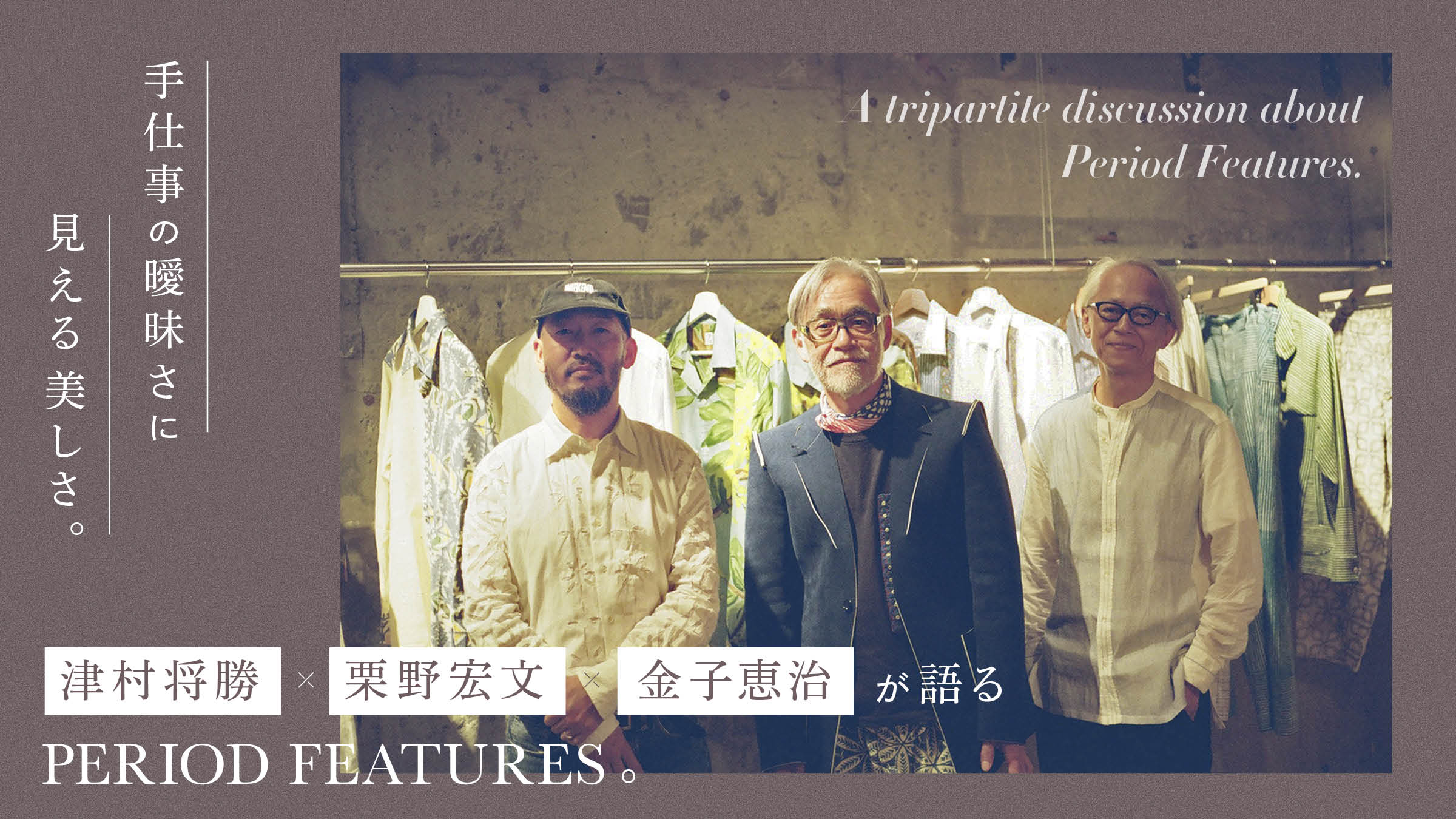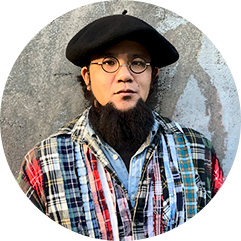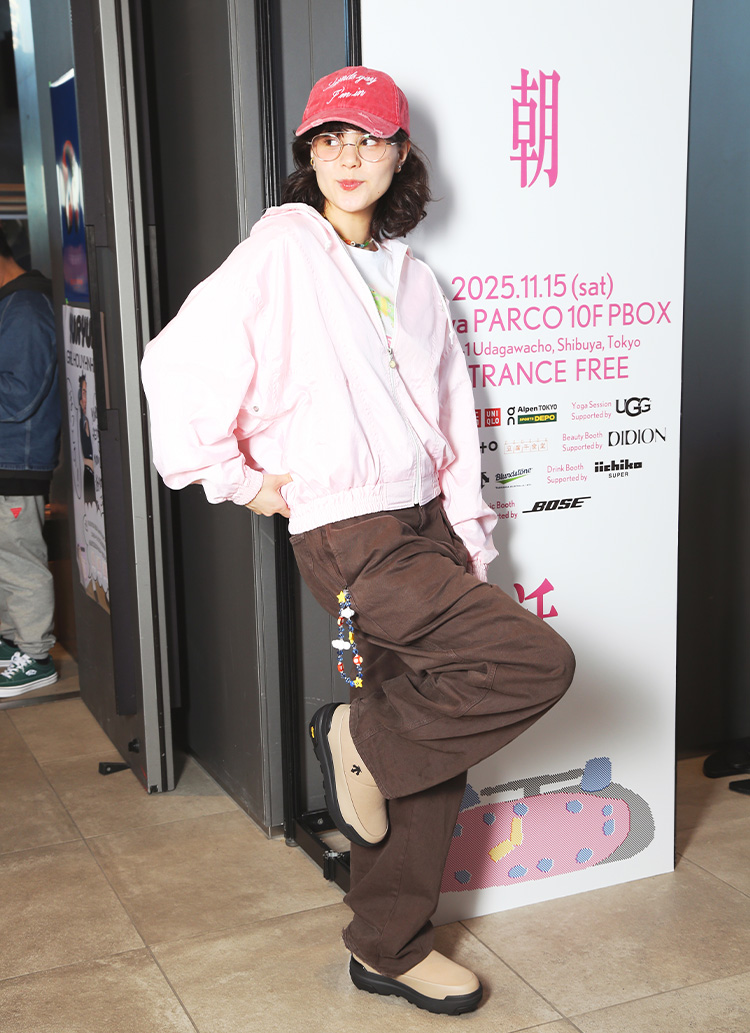I understand that Mr. Kurino also had a restaurant that he could not enter because of its high threshold.

. -I understand that this is the first time that Mr. Tsumura has been interviewed by the media.
Tsumura:I was in "Vogue" once , a long time ago.
Kaneko:It is related to Pitti (Pitti Uomo: the world's largest men's fashion trade show), isn't it? . The fact that the brand started at Pitti is already amazing, isn't it?
Kurino:But you were in "POPEYE" quite a bit.
-POPEYE?
Tsumura:I was a reader model for POPEYE. I was most active in the 80s.
Kurino:I think it was in almost every issue.
Tsumura:At the time, there was a special feature on aloha, and I happened to be walking around Harajuku wearing a black and red hibiscus-patterned aloha, and they asked me to appear. They said I could wear whatever I wanted, so I put on an aloha shirt and tuxedo pants and a pair of "Converse" shoes. . It seemed to be well-received, and I started appearing in every issue.
Kaneko:It is a very cool styling. Did you see Mr. Kurino in the magazine, Mr. Tsumura?
Kurino:Yes, that's right. I have been in the BEAMS F store since 1978, so I have been watching them since then.
Kaneko:. 45 years ago now. You two have had a very long relationship.
-Tell us about the beginning of your career, Mr. Tsumura.
Tsumura:There used to be a store in Harajuku called "Papermoon. It was what we now call a select store, but it was more like a real select store. The style was to match vintage clothing from the 40s and 50s with Yves Saint Laurent, Christian Dior, and Giorgio Armani, which had just debuted at the time. I was 18 years old when I first encountered these stores.
Kurino:I had a hard time getting in because of the high barriers.
Kaneko:I understand that Mr. Kurino also had a restaurant that he could not enter because of its high threshold.
Tsumura:I just happened to walk in on the spur of the moment. I was shocked to find that it was an amazing place. Even the music was being played by a famous New York disco DJ. Those were the days of the first disco boom, and Vogue featured the music. Americans usually went to discos to dance, so they wore tank tops, running shorts, and jogging shoes, but I had a silk satin tank top made for discos, and I wore it, so I was treated very well.
Kaneko:So your style was that complete at the age of 18. When did you first become interested in fashion?
Tsumura:It was for my 75th birthday, when I was five years old, and I had a three-piece suit made for me, and I wore laced boots with it. That was my starting point. But the "Paper Moon" store was a big part of my life. Thanks to them, I was always dressed strangely. So I was asked if I wanted to be a stylist, and I became a stylist first. My first job was creating advertisements for a brand called "PLAY LORD. It was well received, so I compiled a year's worth of ads and made a photo book.

Kaneko:It's too cool. It's not Japanese. Where was it filmed?
Tsumura:All are in Japan.
Kurino:In that era, it was not easy to go on location abroad, so everyone had to be creative. There is no compromise in the way they devised. Of course, there were influences from overseas editorial, but I don't think we are talking about copying someone or going somewhere and being influenced by them, but rather being original. . that there was a starting point for Japanese fashion. Isn't the history of Mr. Tsumura the same? He just liked clothes and wore them well, and that's how it turned out.
Tsumura:It was a time when you could live as you liked. So I think it is the same now, isn't it?
Kaneko:. we may indeed be nearing such an age.
We have been informed that you have styled for Mick Jagger.
Tsumura:I didn't do Mick Jagger. I did have Iggy Pop styled.
Iggy Pop said. ." ...that's a great title.


Tsumura:At the time of this shoot, Iggy had cut himself on his cheek and scarred it. Can you see it?
Kaneko:It's tremendous. I would say that this title is not false at all.
Tsumura:From being a stylist, I was assigned to work as a fashion editor and I also created magazines. Lastly, I became a photographer.
Kaneko:Did you have a reason to become a photographer?
Tsumura:In the advertisements I was making at the time, I only used the photographer's first choice. Whether or not the photograph was good was important, and whether or not the details of the clothing were visible was secondary. I sometimes had to fight with the client to get the right shot. While doing this, I thought that it would be faster and better quality if I took the pictures myself, so I started using a camera.
Kurino:When you started making clothes, did you feel that it was better to make them yourself?
Tsumura:As for how I was able to start making clothes, it was because I happened to come across a factory in India that was sewing a collection line for a maison brand at the time. . If I had not met there, I might not have started making clothes.









